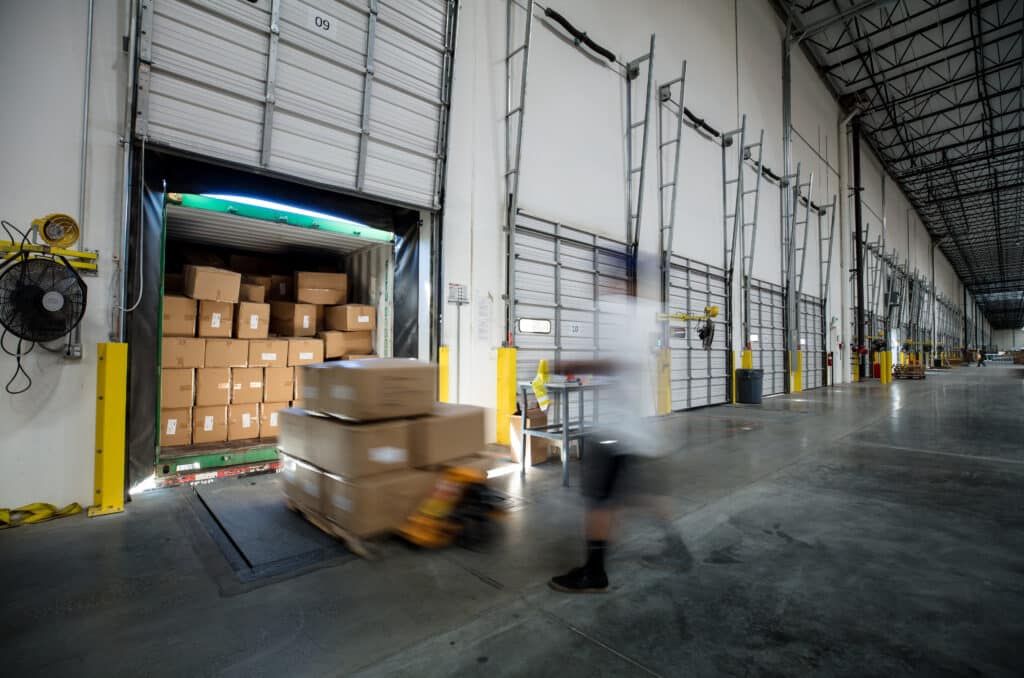From storage to speed: How Omnichannel is redefining distribution centres
Warehousing used to be simple. Stock would arrive in bulk, sit in racks, and go out in bulk to stores on fixed schedules. That model worked fine when retail was predictable and single channel.
But that is not the world we live in anymore.
Today, retail spans across apps, websites, marketplaces, and stores. A customer might order from their phone, pick it up in a store, and return it through a courier. It is messy, fast-paced, and constantly shifting and that means the role of the distribution centre (DC) has completely changed.
Warehouses can no longer just store—they need to fulfil. At speed. Across channels. With accuracy.
The problem with traditional warehouses:
Most traditional warehouses were built for one job: ship out store replenishment in bulk. Their design was linear—receive, put away, pick in bulk, and ship.
But omnichannel has changed all of that. The same DC now needs to:
- Support 3-sales channels and not just one
- Pick a 1-item online order same day it’s received
- Replenish a 200-unit store order in full or suffer chargebacks
- Handle a return from a mobile app sale
- all within the same hour
Speed, flexibility, and responsiveness are no longer nice-to-haves. They are non-negotiable.
What’s different in an Omnichannel DC?
| Aspect | Traditional Warehousing | Omnichannel Distribution Centers (DCs) |
| Design | Linear flow, optimized for bulk movement | Modular and flexible, built for speed and multi-channel needs |
| Order types | Large orders involving pallets and cases | Single-piece, multi-line, and split parcel orders as well as large orders involving pallets & cases |
| Speed | 24–72 hours dispatch | Same-day/next-day fulfilment expected |
| Picking strategy | Zone picking by pallet or case | Discrete, batch, and wave piece picking optimized by channel as well as zone picking for case & pallet |
| Packaging | Standardized for transport efficiency | Customized for item protection and brand experience |
| Returns | Minimal; exception-based | Integrated process with inspection, re-entry into stock, and refurb options |
| Inventory strategy | Siloed by channel | Unified or hybrid pool for all channels |
| Tech | Basic WMS and conveyors | Advanced WES, AI-driven orchestration, robotics, slotting algorithms, vision technology |
| Labor Mgt | Assign people to one area and they work there all day | Highly dynamic. Requires cross-trained people who move around to where the work is throughout the day. Exceptions need to be addressed quickly |
Returns: The hidden complexity in Omnichannel
Traditional warehouses barely accounted for returns—perhaps the occasional exception to a shipment. But in an omnichannel world, returns aren’t just frequent—they’re expected.
Online returns typically range between 15–25%, and for categories like footwear and apparel, they can exceed 30%. This isn’t just a customer service challenge—it’s a critical design consideration for your distribution centre. Today’s omnichannel distribution centres need:
- A dedicated zone
- Inspection for resale potential
- Repackaging/refurbishing stations
- Quick but efficient re-entry into stock
If not done well, returns become a margin drain and a customer experience failure.
It’s not just Tech – It must be Smart
A lot of people assume “Let us just automate it.” But it’s not that simple.
Automation helps—but what kind of automation do you need? More importantly, how will you keep it utilized to maximize your return on it? The traditional options are not the only ones now. There are smarter ways to gain efficiency while also being flexible:
- Smart order orchestration systems to balance work across channels and keep people and MHE busy
- AI to drive real-time, intelligent slotting and to provide valuable filler work during lulls
- Advanced image recognition technology for improved labor management
- Integration with OMS and TMS to sync warehousing activity with delivery
It’s not just about efficiency. It’s also about utilization via orchestration.
What a modern DC looks Like
Picture this:
- A camera on the guard-shack recognizes a trailer number entering the yard and the YMS notifies the driver automatically where to park or dock the truck
- As associates clock in with their fingerprints, they are assigned to areas based on their skills and current work demand
- A 100-unit order for a store is picked and packed while at the same time, a 2-item online order gets dispatched to a consumer
- Three consumer returns are received, inspected, and put back into active stock
- Meanwhile, the WES recognizes an imbalance between ecom picking and packing labor and three packers who are trained to pick get messages that they should move to picking
- As short picks are uncovered, staff are immediately dispatched to pull hot replens by the WMS so the order will go out on time
That’s the daily reality for modern DCs—high mix, high speed, and no room for error.
The Takeaway
Warehouses cannot be static storage points dedicated to one channel anymore. They need to evolve into agile distribution hubs that handle all types of orders, all at once.
The shift to omnichannel is not just about new ”gadgets”—it is about rethinking how your entire network operates and what synergies can be created when channels are fulfilled from one building and when new types of software are introduced. Retailers who have not revisited their DC design in the last 5 years are leaving money and customers on the table.
Final thought
Omnichannel success is not just about delivery speed—it’s about how smartly and consistently you fulfil. DCs are no longer backend support, they are frontline enablers of customer experience and revenue generation. Get them right, and the profits will follow.
To read the other articles in this series, please visit:
Part 1 – Achieving Omni-Channel Excellence
Part 2 – Achieving Omni-Channel Excellence







